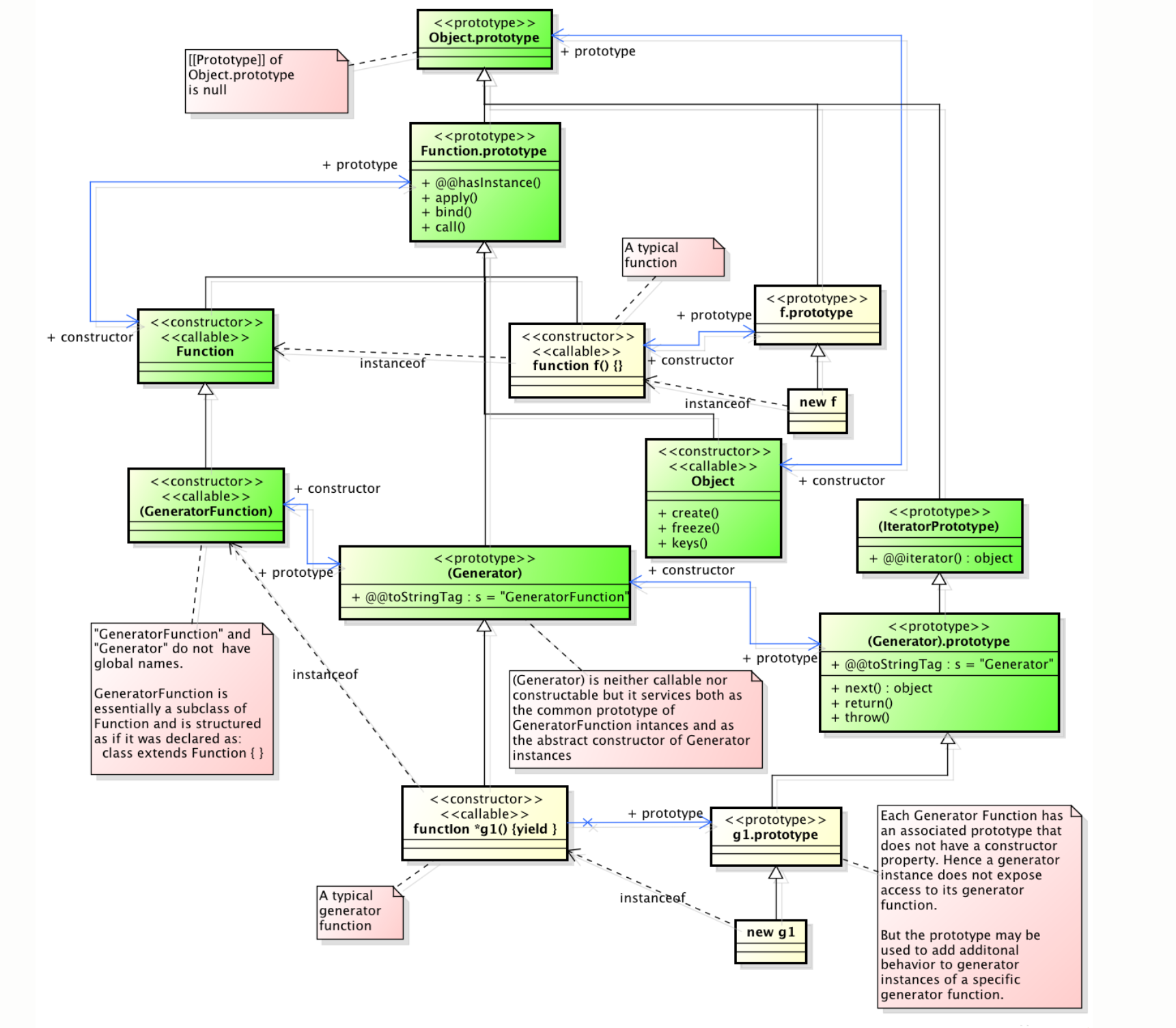您好,登錄后才能下訂單哦!
您好,登錄后才能下訂單哦!
本篇內容主要講解“ES6 Babel怎么編譯Generator”,感興趣的朋友不妨來看看。本文介紹的方法操作簡單快捷,實用性強。下面就讓小編來帶大家學習“ES6 Babel怎么編譯Generator”吧!
function* helloWorldGenerator() { yield 'hello'; yield 'world'; return 'ending';
}我們打印下執行的結果:
var hw = helloWorldGenerator();
console.log(hw.next()); // {value: "hello", done: false}
console.log(hw.next()); // {value: "world", done: false}
console.log(hw.next()); // {value: "ending", done: true}
console.log(hw.next()); // {value: undefined, done: true}具體的執行過程就不說了,我們直接在 Babel 官網的 Try it out 粘貼上述代碼,然后查看代碼被編譯成了什么樣子:
/**
* 我們就稱呼這個版本為簡單編譯版本吧
*/var _marked = /*#__PURE__*/ regeneratorRuntime.mark(helloWorldGenerator);function helloWorldGenerator() { return regeneratorRuntime.wrap( function helloWorldGenerator$(_context) { while (1) { switch ((_context.prev = _context.next)) { case 0:
_context.next = 2; return "hello"; case 2:
_context.next = 4; return "world"; case 4: return _context.abrupt("return", "ending"); case 5: case "end": return _context.stop();
}
}
},
_marked, this
);
}猛一看,好像編譯后的代碼還蠻少的,但是細細一看,編譯后的代碼肯定是不能用的呀,regeneratorRuntime是個什么鬼?哪里有聲明呀?mark 和 wrap 方法又都做了什么?
難道就不能編譯一個完整可用的代碼嗎?
如果你想看到完整可用的代碼,你可以使用 regenerator ,這是 facebook 下的一個工具,用于編譯 ES6 的 generator 函數。
我們先安裝一下 regenerator:
npm install -g regenerator
然后新建一個 generator.js 文件,里面的代碼就是文章最一開始的代碼,我們執行命令:
regenerator --include-runtime generator.js > generator-es5.js
我們就可以在 generator-es5.js 文件看到編譯后的完整可用的代碼。
而這一編譯就編譯了 700 多行…… 編譯后的代碼可以查看 generator-es5.js
總之編譯后的代碼還蠻復雜,我們可以從中抽離出大致的邏輯,至少讓簡單編譯的那段代碼能夠跑起來。
簡單編譯后的代碼第一段是這樣的:
var _marked = /*#__PURE__*/ regeneratorRuntime.mark(helloWorldGenerator);
我們查看完整編譯版本中 mark 函數的源碼:
runtime.mark = function(genFun) {
genFun.__proto__ = GeneratorFunctionPrototype;
genFun.prototype = Object.create(Gp); return genFun;
};這其中又涉及了 GeneratorFunctionPrototype 和 Gp 變量,我們也查看下對應的代碼:
function Generator() {}function GeneratorFunction() {}function GeneratorFunctionPrototype() {}
...
var Gp = GeneratorFunctionPrototype.prototype =
Generator.prototype = Object.create(IteratorPrototype);
GeneratorFunction.prototype = Gp.constructor = GeneratorFunctionPrototype;
GeneratorFunctionPrototype.constructor = GeneratorFunction;
GeneratorFunctionPrototype[toStringTagSymbol] =
GeneratorFunction.displayName = "GeneratorFunction";這段代碼構建了一堆看起來很復雜的關系鏈,其實這是參照著 ES6 規范 構建的關系鏈:

圖中 +@@toStringTag:s = 'Generator' 的就是 Gp,+@@toStringTag:s = 'GeneratorFunction' 的就是 GeneratorFunctionPrototype。
構建關系鏈的目的在于判斷關系的時候能夠跟原生的保持一致,就比如:
function* f() {}var g = f();console.log(g.__proto__ === f.prototype); // trueconsole.log(g.__proto__.__proto__ === f.__proto__.prototype); // true為了簡化起見,我們可以把 Gp 先設置為一個空對象,不過正如你在上圖中看到的,next()、 throw()、return() 函數都是掛載在 Gp 對象上,實際上,在完整的編譯代碼中,確實有為 Gp 添加這三個函數的方法:
// 117 行function defineIteratorMethods(prototype) {
["next", "throw", "return"].forEach(function(method) {
prototype[method] = function(arg) { return this._invoke(method, arg);
};
});
}// 406 行defineIteratorMethods(Gp);為了簡單起見,我們將整個 mark 函數簡化為:
runtime.mark = function(genFun) { var generator = Object.create({ next: function(arg) { return this._invoke('next', arg)
}
});
genFun.prototype = generator; return genFun;
};除了設置關系鏈之外,mark 函數的返回值 genFun 還作為了 wrap 函數的第二個參數傳入:
function helloWorldGenerator() { return regeneratorRuntime.wrap( function helloWorldGenerator$(_context) {
...
},
_marked, this
);
}我們再看下 wrap 函數:
function wrap(innerFn, outerFn, self) { var generator = Object.create(outerFn.prototype); var context = new Context([]);
generator._invoke = makeInvokeMethod(innerFn, self, context); return generator;
}所以當執行 var hw = helloWorldGenerator(); 的時候,其實執行的是 wrap 函數,wrap 函數返回了 generator,generator 是一個對象,原型是 outerFn.prototype, outerFn.prototype 其實就是 genFun.prototype, genFun.prototype 是一個空對象,原型上有 next() 方法。
所以當你執行 hw.next() 的時候,執行的其實是 hw 原型的原型上的 next 函數,next 函數執行的又是 hw 的 _invoke 函數:
generator._invoke = makeInvokeMethod(innerFn, self, context);
innerFn 就是 wrap 包裹的那個函數,其實就是 helloWordGenerato$ 函數,吶,就是這個函數:
function helloWorldGenerator$(_context) { while (1) { switch ((_context.prev = _context.next)) { case 0:
_context.next = 2; return "hello"; case 2:
_context.next = 4; return "world"; case 4: return _context.abrupt("return", "ending"); case 5: case "end": return _context.stop();
}
}
}而 context 你可以直接理解為這樣一個全局對象:
var ContinueSentinel = {};var context = { done: false, method: "next", next: 0, prev: 0, abrupt: function(type, arg) { var record = {};
record.type = type;
record.arg = arg; return this.complete(record);
}, complete: function(record, afterLoc) { if (record.type === "return") { this.rval = this.arg = record.arg; this.method = "return"; this.next = "end";
} return ContinueSentinel;
}, stop: function() { this.done = true; return this.rval;
}
};每次 hw.next 的時候,就會修改 next 和 prev 屬性的值,當在 generator 函數中 return 的時候會執行 abrupt,abrupt 中又會執行 complete,執行完 complete,因為 this.next = end 的緣故,再執行就會執行 stop 函數。
我們來看下 makeInvokeMethod 函數:
var ContinueSentinel = {};function makeInvokeMethod(innerFn, self, context) { var state = 'start'; return function invoke(method, arg) { if (state === 'completed') { return { value: undefined, done: true };
}
context.method = method;
context.arg = arg; while (true) {
state = 'executing'; var record = { type: 'normal', arg: innerFn.call(self, context)
}; if (record.type === "normal") {
state = context.done
? 'completed'
: 'yield'; if (record.arg === ContinueSentinel) { continue;
} return { value: record.arg, done: context.done
};
}
}
};
}基本的執行過程就不分析了,我們重點看第三次執行 hw.next() 的時候:
第三次執行 hw.next() 的時候,其實執行了
this._invoke("next", undefined);我們在 invoke 函數中構建了一個 record 對象:
var record = {
type: "normal",
arg: innerFn.call(self, context)
};而在 innerFn.call(self, context) 中,因為 _context.next 為 4 的緣故,其實執行了:
_context.abrupt("return", 'ending');而在 abrupt 中,我們又構建了一個 record 對象:
var record = {};
record.type = 'return';
record.arg = 'ending';然后執行了 this.complete(record),
在 complete 中,因為 record.type === "return"
this.rval = 'ending';this.method = "return";this.next = "end";
然后返回了全局對象 ContinueSentinel,其實就是一個全局空對象。
然后在 invoke 函數中,因為 record.arg === ContinueSentinel 的緣故,沒有執行后面的 return 語句,就直接進入下一個循環。
于是又執行了一遍 innerFn.call(self, context),此時 _context.next 為 end, 執行了 _context.stop(), 在 stop 函數中:
this.done = true;return this.rval; // this.rval 其實就是 `ending`
所以最終返回的值為:
{ value: 'ending',
done: true
};之后,我們再執行 hw.next() 的時候,因為 state 已經是 'completed' 的緣故,直接就返回 { value: undefined, done: true}
當然這個過程,看文字理解起來可能有些難度,不完整但可用的代碼如下,你可以斷點調試查看具體的過程:
(function() { var ContinueSentinel = {}; var mark = function(genFun) { var generator = Object.create({ next: function(arg) { return this._invoke("next", arg);
}
});
genFun.prototype = generator; return genFun;
}; function wrap(innerFn, outerFn, self) { var generator = Object.create(outerFn.prototype); var context = { done: false, method: "next", next: 0, prev: 0, abrupt: function(type, arg) { var record = {};
record.type = type;
record.arg = arg; return this.complete(record);
}, complete: function(record, afterLoc) { if (record.type === "return") { this.rval = this.arg = record.arg; this.method = "return"; this.next = "end";
} return ContinueSentinel;
}, stop: function() { this.done = true; return this.rval;
}
};
generator._invoke = makeInvokeMethod(innerFn, context); return generator;
} function makeInvokeMethod(innerFn, context) { var state = "start"; return function invoke(method, arg) { if (state === "completed") { return { value: undefined, done: true };
}
context.method = method;
context.arg = arg; while (true) {
state = "executing"; var record = { type: "normal", arg: innerFn.call(self, context)
}; if (record.type === "normal") {
state = context.done ? "completed" : "yield"; if (record.arg === ContinueSentinel) { continue;
} return { value: record.arg, done: context.done
};
}
}
};
} window.regeneratorRuntime = {};
regeneratorRuntime.wrap = wrap;
regeneratorRuntime.mark = mark;
})();var _marked = regeneratorRuntime.mark(helloWorldGenerator);function helloWorldGenerator() { return regeneratorRuntime.wrap( function helloWorldGenerator$(_context) { while (1) { switch ((_context.prev = _context.next)) { case 0:
_context.next = 2; return "hello"; case 2:
_context.next = 4; return "world"; case 4: return _context.abrupt("return", "ending"); case 5: case "end": return _context.stop();
}
}
},
_marked, this
);
}var hw = helloWorldGenerator();console.log(hw.next());console.log(hw.next());console.log(hw.next());console.log(hw.next());到此,相信大家對“ES6 Babel怎么編譯Generator”有了更深的了解,不妨來實際操作一番吧!這里是億速云網站,更多相關內容可以進入相關頻道進行查詢,關注我們,繼續學習!
免責聲明:本站發布的內容(圖片、視頻和文字)以原創、轉載和分享為主,文章觀點不代表本網站立場,如果涉及侵權請聯系站長郵箱:is@yisu.com進行舉報,并提供相關證據,一經查實,將立刻刪除涉嫌侵權內容。